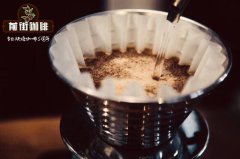How to classify coffee beans A brief introduction to the classification standard of Ethiopian defective beans

Professional coffee knowledge exchange more coffee bean information please follow the coffee workshop (Wechat official account cafe_style)
Introduction of Qianjie-defective bean grading system
This is the earliest classification method. At present, the main representative countries that use defective bean proportion method are Ethiopia, Indonesia and so on. Indonesian beans are mainly divided into six grades, namely G1~G6. Ethiopian coffee bean classification takes 300g coffee beans as samples to select the number of defective beans.
Quality and grading of Ethiopian coffee beans
Grade, number of defective beans
G10-3
G24-12
G3 13-25
G4 26-45
G546-100
Classification according to the proportion of defective beans
This grading method deducts points according to defective beans, and then carries out a taste test. Defective beans are an important factor that destroys the flavor of coffee, so defective beans should be removed in the last step of raw bean treatment. This method is widely used in Brazil, we often see "Brazil Santos NO.2" when buying coffee beans, NO.2 is the highest grade of Brazilian coffee beans, because there are very few defective beans, and can not maintain a certain supply, so Brazil sets NO.2 as the highest level, not NO.1.
Due to the rise of boutique coffee, coffee producing countries pay more and more attention to the quality of coffee beans, and the control of defective beans is the most important way, so it is more and more common to classify according to the proportion of defective beans.
Knowledge: the coffee grading of most coffee-producing countries is not carried out according to one standard, but not only to examine the defect rate, but also to ensure the size of beans, but also to measure the grade of beans by multiple standards such as a certain altitude.
In short: Qianjie is a coffee research hall, happy to share the knowledge about coffee with you, we share unreservedly just to make more friends fall in love with coffee, and there will be three low-discount coffee activities every month. The reason is that Qianjie wants to make more friends drink the best coffee at the lowest price, which has been Qianjie's tenet for 6 years!
END
Important Notice :
前街咖啡 FrontStreet Coffee has moved to new addredd:
FrontStreet Coffee Address: 315,Donghua East Road,GuangZhou
Tel:020 38364473
- Prev

What does coffee bean G1 mean? Ethiopian coffee grade G1 is a highly selected beauty.
Professional coffee knowledge exchange more coffee bean information please follow the coffee workshop (Wechat official account cafe_style) front street-Ethiopian coffee bean grading system introduction Ethiopian coffee grade definition is complex. Ethiopian coffee is sold through the trading system of the Ethiopian Commodity Exchange (ECX), and ECX provides a safe and reliable delivery to
- Next

How to classify defective coffee beans? Colombian coffee classification system standard is not general.
Professional coffee knowledge exchange more coffee bean information please follow the coffee workshop (Wechat official account cafe_style) Front Street-Columbia grading system Columbia raw beans are generally classified using two classification methods, defect classification and mesh size classification. In the view of a certain fish, according to the classification of defects, the coffee flavor is controlled, and the beans with bad flavor are picked out one by one.
Related
- Beginners will see the "Coffee pull flower" guide!
- What is the difference between ice blog purified milk and ordinary milk coffee?
- Why is the Philippines the largest producer of crops in Liberia?
- For coffee extraction, should the fine powder be retained?
- How does extracted espresso fill pressed powder? How much strength does it take to press the powder?
- How to make jasmine cold extract coffee? Is the jasmine + latte good?
- Will this little toy really make the coffee taste better? How does Lily Drip affect coffee extraction?
- Will the action of slapping the filter cup also affect coffee extraction?
- What's the difference between powder-to-water ratio and powder-to-liquid ratio?
- What is the Ethiopian local species? What does it have to do with Heirloom native species?

